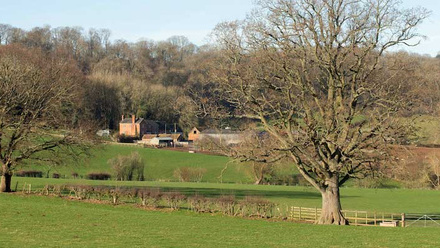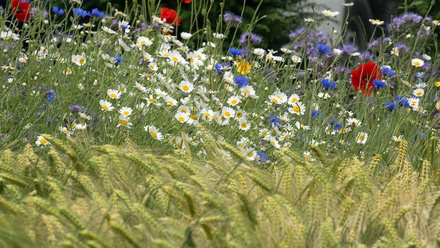ELMs Case Study: Uttoxeter, Staffordshire
Summary
- Small family-run dairy farm
- Owned since 1938
- 95 milking cows
- Supply small local processor
- Gradual improvements have increased yield
- Advice from vet and feed adviser
- Productivity improvements have reduced environmental impact
- Work with South Staffs Water
- Mid-Tier Stewardship
- Unsure about future schemes
- More details and better communication is needed.
Background
This is a family-run dairy enterprise based near Uttoxeter in Staffordshire. The farm is run by a father and son team as well as their wives. The farm occupies 160 acres and the family has been there since 1933, originally as tenants and as owners since 1938.
The current farmer took over the running of the farm in June 1991. The farm is all given over to pasture. It is part of the South Staffs Water Catchment Area and participates in the environmental scheme run by the water company involving ditching and fencing.
The farm has 250 head of cattle with 95 milking cows and the remainder are young stock. They breed their own replacements and have done so for the past 22 years. They sell around 30 store cows locally every year and the bull calves go to a local farmer for rearing.
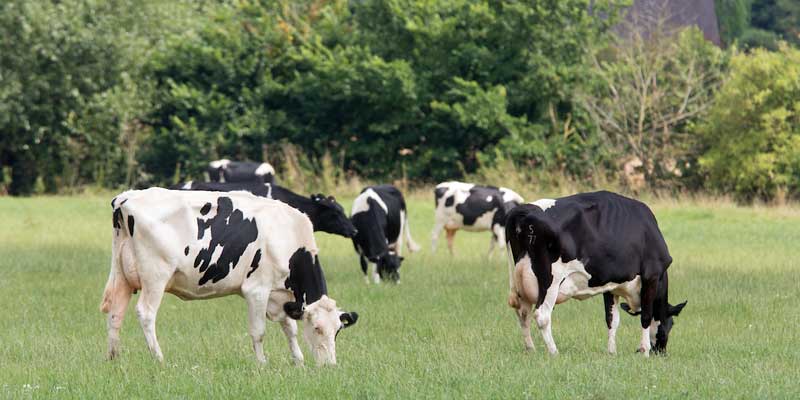
The majority of the work on the farm is done by the family including artificial insemination. The only work contracted out is baling, hedging and any ploughing.
Increased productivity
Productivity on the farm has improved from just over 6,000 litres per cow per annum to around 7,700 today. This is all on a purely grass-based system. The cows are turned out to pasture at the end of April and are housed around October or November depending on the weather. During the winter they
are fed on silage produced on the farm.
All the milk from the farm goes to a local processor for liquid milk. The dairy supplies local authorities, government bodies, wholesalers, restaurants, nursing homes, bottled milk buyers, bakeries, food processors and doorstep services throughout the Midlands.
The farmer says: “We have an excellent relationship with the local processor and get consistently good scores for quality including fat, protein and cell counts.”
The farm does rent out a small amount of land to another farmer for sheep, although they have not done so this year. He says: “We generally take three or four cuts from the grass during the year to make silage for when the cows are housed. This year will depend very much on the weather and the availability of fertiliser, especially given the current prices.”
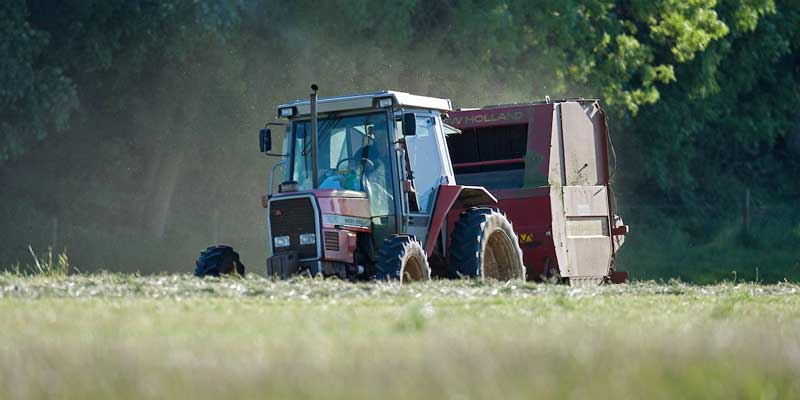
Advice for ‘fine tuning’
The farm is advised by a nutritionist from a distributor company who is a member of the Feed Adviser Register (FAR). He says: “The advice that we give is very much about making tweaks and dealing with situations as they arise, although the majority of changes are based on proactive measures. My clients are very good dairy farmers and don’t need a lot of help in the day-to-day running of the farm.
"For instance, given the current high price of nitrogen fertiliser, we are currently looking at a ‘slurry bug’ – an additive which we can add to the slurry and help to capture more nutrients.”
Over recent years the family have made improvements across the farm including new cubicles for the cows and mattresses with sawdust bedding. The farmer's son says: “Four years ago we changed the slurry system to a separator which separates the slurry into solids and liquids. We also improved the concrete around the ‘muck holes’ to improve drainage.”
The adviser says: “The family have worked closely with South Staffs Water on a number of areas around the farm to improve the environmental impact of the farm. There’s always something being done to invest in the farm whether it’s buildings or collars for the cows.”
The farmer's son says: “Technology-wise we have doubled the parlour up in 2009 and installed ACRs (Automatic Cluster Removers) in 2013, and we have received money from the Farming Equipment and Technology Fund (FETF) for a cluster flushing system.”
Electronic monitoring
The collars worn by the cows enable individual monitoring of yield, rumination, health and fertility. The farmer says: “The electronic monitoring of the cows has helped a lot. It helps us to pick up early on issues around rumination and health such as mastitis or ketosis, as well as monitoring when the cows are ready for insemination.”
The adviser says that the biggest driver for the improvement made on the farm has been the desire by the family. “It’s not about grants,” he says, “Those may have speeded up the implementation of these technologies, but it’s really about the drive of the family to improve performance on the farm.”
The farmer's son says: “The improvement in efficiency brought about by greater mechanisation has helped us as well. We used to have to spend twenty minutes at the end of each day checking the cows and we don’t have to do that any more due to the monitoring. It gives us more time to devote to other things.
"Greater all-round efficiency helps to reduce the environmental impact of what we do and the changes we have made and the introduction of monitoring have increased the health and welfare of the herd.
“For instance, the bedding has greatly improved cow comfort and reduced mastitis. All of this has also reduced our use of medication such as antibiotics. The investment in individual calf pens, rather than having them together in the shed, has also greatly improved their health and productivity.”
Role of the advisers and network
Apart from the vet who visits once a month, the adviser is the main person advising the family and has been working with them for the past four years.
He says: “We have a very open relationship and they will very often question the recommendations I am making to ensure that they are getting the best advice. It takes time to develop a relationship. After all there is a cost involved with anything that comes onto the farm and I have to justify that expenditure.
“It’s a simple system based on round bales, it has been for many years and will continue to be so. All we tried to do is to improve the nutritional value coming out of the bales and how that bale is preserved. We are just fine-tuning the system, such as moving the first cut of grass to before May and using a bacterial and enzyme-based bale additive.”
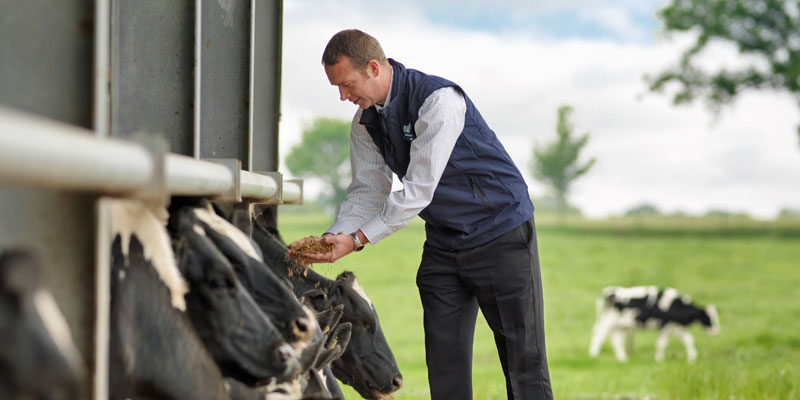
The farmer's son says: “Before we started working with the adviser we didn’t have any external advice to give us the confidence to make these small changes to the way that things are done.
"If we needed advice from our feed company we had to go and ask, whereas our adviser is much more likely to come to us with suggestions. For years we have used a sugar beet-based cake but this year we’ve changed to NWF’s ‘Sustain’, a more sustainable higher energy and starch-based cake.
“In terms of why we use our adviser and the company he works for, I would say it’s 50% about the feed and getting that side right and 50% about the advice. His knowledge is invaluable to us, and the more Howard knows, the more we know.”
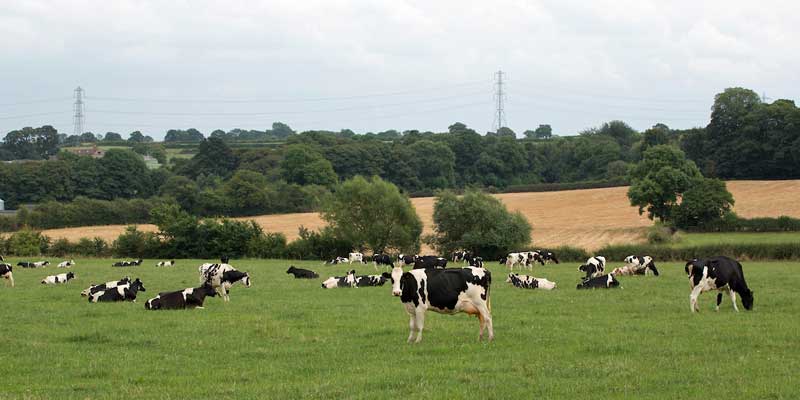
Minor changes
The farmer says: “Working with our adviser we have also made changes with the dry cows, there is a cost involved, but the main point is that it’s working. Not only are we seeing improvements in productivity and fertility but also in the health and welfare of the cows. The reduction in metabolic diseases has also led to a reduction in vet bills.”
The adviser visits the farm on a regular basis as needed, but at least once a month. He will spend time walking amongst the cows around before discussing any changes with the family.
The farmer says: “The advice that Howard gives to us is valuable and helps us to make decisions. He’s not telling us what to do, but we consult with him on what we’re doing and he will make suggestions. Because the adviser is dealing with a range of farms he can give us a broader perspective on things.”
The adviser's company also holds meetings for its dairy clients and the family regularly attends these to pick up new information.
Environmental activity
When it comes to environmental impact the adviser points out that the improvements in productivity made have not only benefitted the family but also reduced the carbon footprint of our milk.
He says: “The system hasn’t changed but the efficiency of the cows has increased. They are still using the same amount of land but you are getting more milk for the same inputs and therefore a better carbon footprint per litre of milk.
“In terms of work on the land there has been work on hedges, drainage and sward slitting to improve aeration of the grass. This encourages growth but also improves the soil structure. It’s a matter of delivering environmental benefits alongside productive farming.”
The farmer's son says: “We are using a dribble bar to apply our slurry which helps us to target its use more efficiently but also to reduce the environmental impact and any issues with run-off. We are also re-seeding around ten per cent of the pasture annually.”
There is one public footpath which cuts across the farm and it borders on woodland to one side. As a result of the improvements made on the farm, less time is spent on jobs such as feeding, and this reduces the amount of diesel used.
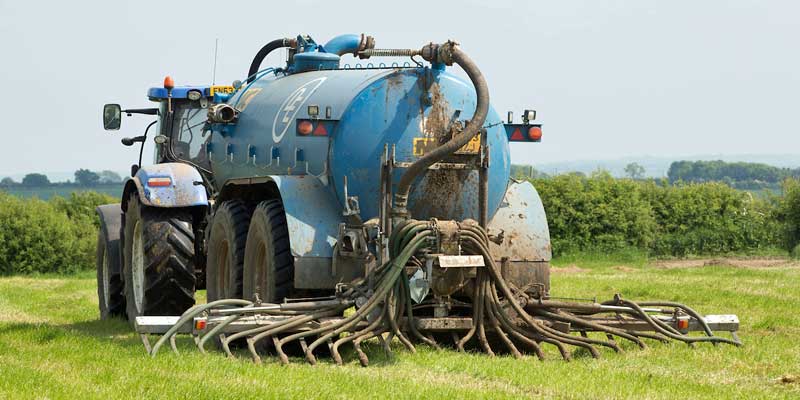
Larger machinery used for muck-spreading means that less trips are needed to cover the same ground, saving diesel, lowering our fuel carbon footprint and reducing soil compaction.
The distributor company has made the decision to make available alternative ranges of feed that do not include soya, palm or maize-based products and try to use UK-grown material.
The adviser says: “Increasingly the retailers and the food processors want to know what is going into the supply chain and it is important that we have the right and best combination of feed products to respond to and supply to our customers.
"We have carried out on-farm trials which compared soya to our own rumen-protected rape and saw no discernible change in performance.”
Attitude towards environmental stewardship and ELMS
The farm is currently in Mid-Tier Countryside Stewardship. This involves their hedges, ditches and some woodland and pasture management.
The farmer's son says: “As far as ELMS is concerned, I really don’t know much about it. As far as I can see it won’t change too much from the current stewardship scheme.
"We been given information about Farming Incentive scheme and speaking to other farmers for £22 per hectare, I don’t think many farmers
will bother doing it.
“If it is about the good things that we are already doing then I may as well apply for the money, but it certainly won’t encourage me to do more. The Single Farm Payment to us is currently worth £12,000, but under the new Farming Incentive it’s £1,300. If it’s a lot of paperwork, it’s just not worth our while.
"The Single Farm Payment is important to us and we can’t see where that money is going to be replaced.”
Better communication
“We are already trying to do everything we can to improve the environment and reduce the impact of what we do. If we are going to do more we need more information so we can decide what is relevant to us. There may well be schemes in the pipeline that are relevant but communication needs to be improved.
“What we don’t need are schemes that force us to spend the money in a certain way, as opposed to the Single Farm Payment, where we can spend the money where it is needed in the business. We have also experienced a lack of communication from some schemes and excessive bureaucracy which has delayed payments.
“We run a seasonal business and we need to make investments on a timely basis, not when these organisations are ready to release the money. There are often long lead times on buildings or equipment and in farming today you have to plan at least twelve months ahead.”
Potential areas for ELMS
Potential areas that Bank Top could be involved with in ELMS include:
- Soil management
- Fertiliser use
- Surface run-off/management
- Slurry/manure management – storage and application
- Livestock management – house
- Livestock management – feeding and drinking water
- Access and Engagement
- Water storage
- Veterinary medicine application
- Manage grasslands
- Drainage management



